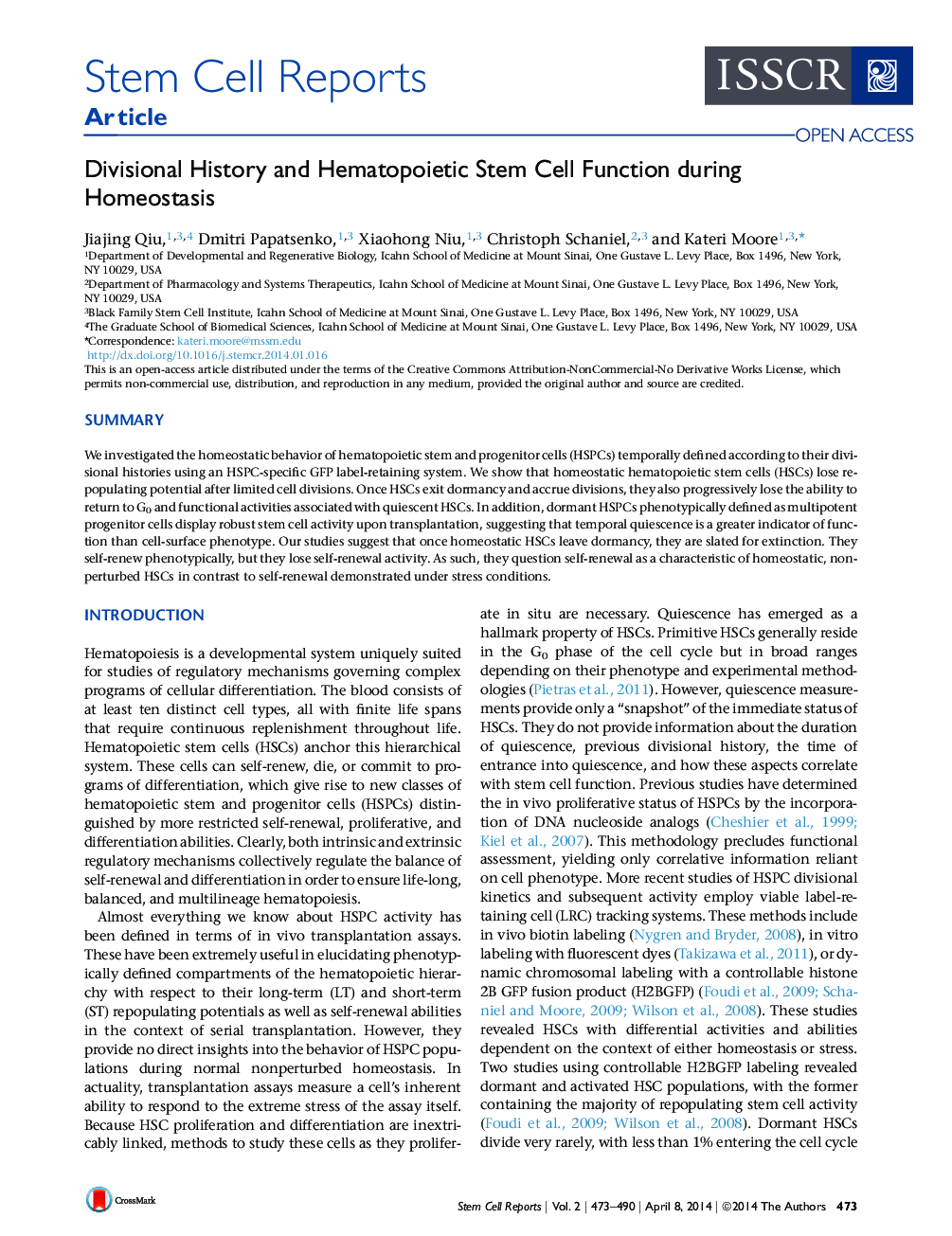| Article ID | Journal | Published Year | Pages | File Type |
|---|---|---|---|---|
| 2093816 | Stem Cell Reports | 2014 | 18 Pages |
•Homeostatic HSCs progressively lose self-renewal ability with cell division•G0 homeostatic HSCs lose functional ability in relation to their divisional history•Temporally defined quiescence reflects HSC functional abilities better than phenotype•Once dormant HSCs are activated without stress, they lose self-renewal activity
SummaryWe investigated the homeostatic behavior of hematopoietic stem and progenitor cells (HSPCs) temporally defined according to their divisional histories using an HSPC-specific GFP label-retaining system. We show that homeostatic hematopoietic stem cells (HSCs) lose repopulating potential after limited cell divisions. Once HSCs exit dormancy and accrue divisions, they also progressively lose the ability to return to G0 and functional activities associated with quiescent HSCs. In addition, dormant HSPCs phenotypically defined as multipotent progenitor cells display robust stem cell activity upon transplantation, suggesting that temporal quiescence is a greater indicator of function than cell-surface phenotype. Our studies suggest that once homeostatic HSCs leave dormancy, they are slated for extinction. They self-renew phenotypically, but they lose self-renewal activity. As such, they question self-renewal as a characteristic of homeostatic, nonperturbed HSCs in contrast to self-renewal demonstrated under stress conditions.
